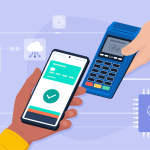Affiliate marketing involves promoting another business’s products or services online in return for a small affiliate commission after each sale is made.
As a promoter, affiliate marketing is one of the most effective ways to generate passive income online. Once you sign up for a participating platform, you’ll get a unique affiliate link. You can then embed this in your website, blogs, emails, or social media. When a consumer clicks that link and buys a business’s products, you’ll receive a percentage of the sale.
In return for providing a cut of the profits, the participating business benefits from cost-effective marketing, helping them attract more customers and generate more sales. Think of it as a mutually-beneficial partnership. It’s not surprising the global affiliate marketing industry is currently valued at $16 billion.
Affiliate marketing for beginners
If you’re just getting started with affiliate marketing for the first time, you’re likely wondering how the process works. Let’s break it down.
- The aspiring affiliate marketer finds an affiliate program that interests them. After inspecting the types of products they’ll be selling, the commissions on offer, and the payment structure, they sign up and await approval confirmation.
- Once they’re accepted into the partner program, they’ll receive custom affiliate links for different products. These links are entirely unique to the marketer, meaning the business can track which customer purchase came from which promotion.
- The marketer utilises different channels to promote products to their customers. They might include an affiliate link in a blog, place it in a podcast description, or add it to their social media along with a video explaining the benefits of the product. Note that the marketer needs to tell the audience that they’re promoting a brand via an affiliate link.
- A consumer sees the marketer’s promotion, clicks the link, and buys from the business website. As the affiliate link contains a tracking ID, the merchant business can see when the marketer has referred a customer to them.
- After the affiliate earns enough commissions, they can withdraw the funds. Depending on the affiliate model, the business may offer the money directly or provide a different form of reward, such as a voucher.
This is the standard type of affiliate marketing program. Common affiliate sites that offer this include Amazon, Etsy, and the eBay partner network.
On the flip side, brands may also approach content creators directly to become affiliate marketers — usually with a larger commission fee attached. This is a common tactic for brands to form affiliate partnerships with influencers, as well as popular websites that receive a lot of traffic.
What happens if the consumer doesn’t buy the product immediately?
Affiliate marketers often worry they won’t receive a commission if the customer doesn’t click the link and buy right away. Fortunately, this isn’t the case.
When a consumer clicks an affiliate link, a cookie (small file) is stored on their device. That way, even if the customer abandons the page and returns to the site later via a Google search, it still counts as the marketer’s referral because they initially sparked interest in the product.
What are the different types of affiliate marketing?
To further explain the concept of affiliate marketing, let’s break down three major types you should know about: unattached, related, and involved.
Unattached affiliate marketing
With unattached affiliate marketing, the marketer promotes a business’s products without having any expertise or personal connection to the niche. They’re simply relaying information without having any relation to that product. This is the most common type for paid advertising.
Related affiliate marketing
In this type, the related affiliate marketer promotes products that align with their audience’s preferences and interests. An affiliate doesn’t necessarily use the products, but the products they promote are related to the theme of their content. For example, a cleaning YouTuber receives a commission for promoting a new detergent.
Involved affiliate marketing
With this type, the involved affiliate marketer promotes products they’ve used and believe in. For instance, a dedicated tech review site that tests products and promotes the best ones earning a commission in the process.
Which type of affiliate marketing should I choose?
Every type of affiliate marketing has its own considerations, benefits, cons, and use cases. Let’s break it down.
| Affiliate Marketing Type | Unattached | Related | Involved |
| Best for | Paid adverts | Social media and influencer marketing. | Affiliate marketing websites and blogs. |
| Audience engagement | No audience engagement | Some audience engagement. | Very good for building engagement. |
| Benefits | Easy to do with little effort | More credible as you’re promoting in your niche. | Scalable. Good for building trust. |
| Drawbacks | Expensive to run paid ads | You could lose audience trust if a product you promote isn’t awesome. | Takes a lot of time and effort. |
What are the benefits of affiliate marketing?
Is affiliate marketing right for you? Here are four compelling benefits to consider.
1. Passive income
Once you begin the initial work to grow your marketing channel and choose one or more affiliate partners, you’re all set. Your unique links will open passive affiliate income streams without you having to do anything else.
2. Low investment
With affiliate marketing, you don’t need to buy or own any of the products you’re selling online, meaning the initial affiliate marketing spend is quite low. All you need is a marketing channel.
3. Flexibility
The low initial investment allows you to switch affiliate programs without incurring extra costs. You can experiment with different products to find out which gain the most traction. As affiliate marketing is a passive form of income, you can also work it around your regular job.
4. Scalability
One of the most enticing parts about affiliate marketing is that you can commit as much or as little time to it as you want. Test the waters by investing a few hours a week. If you find it’s a good source of income, you can quickly scale by joining more affiliate programs and promoting more products.
How to get started with affiliate marketing?
Building an affiliate network isn’t necessarily complex. However, the more time you invest in the beginning, the better your chance of making serious cash. Let’s dive into our seven steps to successful affiliate marketing.
Step 1: Choose an affiliate niche
You don’t have to decide on a single affiliate marketing product, but carving out a niche will often help you land more commissions.
Picture it this way. If you were to trust an affiliate link for a new smartphone, would you be more likely to trust a credible tech review site or a car blog? The more your audience trusts your recommendations, the more affiliate marketing conversions you’ll get.
How do you choose a niche? Here are a few considerations to think about:
- Is the niche going to make me any money? Choosing a niche that isn’t very popular might seem like a good idea, but this could mean consumers won’t be interested in the products you’re promoting. Opt for a niche that strikes the balance between popularity and oversaturation.
- Does the niche genuinely interest you? To really connect with consumers, you’ll need to have a genuine passion for your speciality. You don’t have to use the products you promote, but you do need to prove you’re an expert on your topic. Choose something that engages you.
- Am I experienced enough in this area? You don’t have to be an expert in your niche right now, but it helps to have some background knowledge of your sector prior to getting started.
Choosing a niche with good financial prospects is one thing, but selecting a speciality that interests and engages you is equally important. Affiliate marketing takes time. If you choose a niche that you’re not passionate about, you’ll risk losing interest, plus your audience will be less likely to trust you.
Step 2: Decide on your marketing channels
With your niche secured, decide on your marketing channels to promote other businesses’ products.
This may already be obvious to you. You may already have a well-established website, blog, or social media profile. However, if you’re starting from scratch, here are a few potential options:
- Create an informative blog related to your niche: A blog related to your specialism is one of the most effective strategies to build a loyal following. For instance, posting about the latest news in the health sector will draw a specific audience that is interested in that field.
- Create videos for social media platforms: You probably already know that social media is the new way to connect with a large audience. Whether it’s Facebook, Instagram, YouTube, or TikTok, choose a channel best suited to your niche and skill set, then post informative content to grow your user base.
- Build a product review site: Product review sites are one of the easiest ways to get started with involved affiliate marketing. Simply buy a product, review it on your blog, and link to it on your preferred affiliate program.
Again, the best practice is to choose a marketing channel that you know, are interested in, and are related to your niche.
Step 3: Choose your affiliate program
Next, you should choose an affiliate marketing program that aligns with your niche. While a broad platform like Amazon’s affiliate program is never a bad option for beginners, there are more niche programs that may appeal more to your target audience. Here are some things to consider:
- Does the affiliate tie in to my speciality? You aren’t going to have much success promoting a health and wellness brand if you’re focused on the tech space. Choose an affiliate program that aligns with your niche.
- Do the products align with my audience’s needs? You should aim to find a business with products that can be genuinely useful to your audience. This will help you build trust and improve affiliate sales.
- Does this affiliate offer reasonable commission rates? Make sure your chosen affiliate program offers a commission you’re happy with. But remember that high pay rates aren’t everything. A low-commission product category that’s in demand may make you more money with affiliate marketing in the long run.
One great option is to start with brands you know and check if they have an affiliate program. For example, if you’re running a beauty blog, which beauty brands do you love? Over 80% of brands use affiliate marketing, so your odds of finding a program offered by a business you trust are high.
Step 4: Create valuable content
Now, for the hard part. There are millions of blogs and social media channels online. To stand out, you need to create high-quality content that draws your audience in and makes them want to stick around.
Whatever your marketing channel, you must prioritise providing value to the audience. What are they looking for? How can you offer something unique? What will make consumers keep coming back? Here are some ideas to consider for excellent content creation.
- Conduct original research.
- Collaborate with experts to offer insights.
- Buy products and test them to provide an honest review.
- Incorporate engaging visuals and infographics.
- Be conversational and authentic.
- Answer common questions your audience might be having.
- Back up your information with data.
- Incorporate storytelling into your content.
- Provide more up-to-date information than competitors.
- Create lead magnets (like eBooks and PDFs).
Ultimately, your affiliate marketing efforts will only scale if you can bring more traffic to your marketing channel. It’s important to invest the time to create content that facilitates that.
This could range from developing relationships with brands and influencers to email newsletter collaborations. For example, content marketers who have an email list might run cross-collaboration email campaigns if they share similar audiences. To streamline this, you could also use email outreach software to automate the process.
If you are a YouTube content creator, it is also quite common to organise talks, interviews, and discussions with another YouTuber who has a similar target audience to increase your YouTube subscribers on both YouTube channels. This is especially common in the personal finance space.
Step 5: Build an audience
Once you’ve started creating exceptional content, there’s still work to do. You need to start driving traffic to your channel through digital marketing so people can find the material you’re producing.
There are a few ways to achieve this. You can use search engine optimisation (SEO) to target specific keywords and help users find your content organically. On the flip side, you can also opt for paid advertising to bring website traffic to your content faster, though be wary — this can get expensive.
Once you have an initial following, you’ll need to build trust with your audience to keep them returning to your site. An email list for fans will let you create authentic connections with consumers. You can also communicate directly with followers on social media platforms or in blog content.
Ultimately, the goal here is to build an audience that trusts you and respects your credibility. Once you’ve done that, gaining passive income from affiliate marketing becomes a whole lot easier.
Step 6: Optimise your link placements
Once you’ve cemented a following, you can begin to include affiliate links. Here are some tips.
- Include your links only when relevant. Don’t force them in, as this looks dishonest.
- Place your links in positions that are easy to see. Use tables and buttons that draw the eye.
- Remember to tell your followers you’re promoting a brand as an affiliate. Failing to disclose this is a compliance breach.
Step 7: Monitor your progress
You’re all set. The last thing to do is to track your progress as you go. Note which products and affiliate programs drive the most success. You can use this information to improve and refine your approach over time.
What are the most popular niches for affiliate marketing?
While it’s always best to choose a niche based on your own interests, some sectors have been historically more lucrative than others. Let’s take a look at a few top performers in 2024.
Technology
Tech is a seriously profitable niche because it never stops evolving. Promoting gadgets and Software as a Service (SaaS) products to a tech-focused audience will always be a lucrative choice for those who can prove their credibility. Just make sure the field interests you, as your audience will be able to tell if you lack knowledge in the niche.
Example: Tom’s Hardware
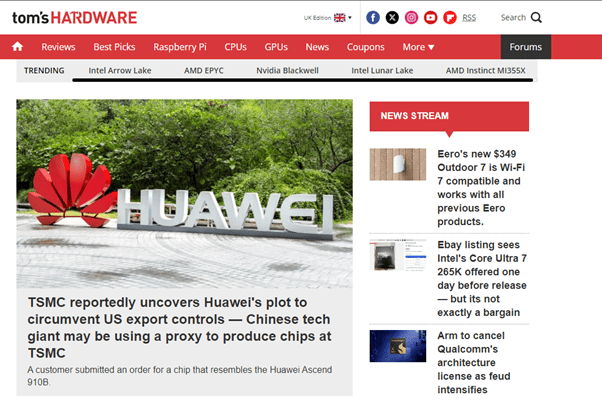
Image source: Tom’s Hardware
Tech site Tom’s Hardware integrates affiliate links into its reviews. If a customer reads the product review and buys the product through the link, the site earns a commission on every sale. Incidentally, they even provide affiliate links for products they’ve deemed poor, showing you don’t have to love a product to promote it.
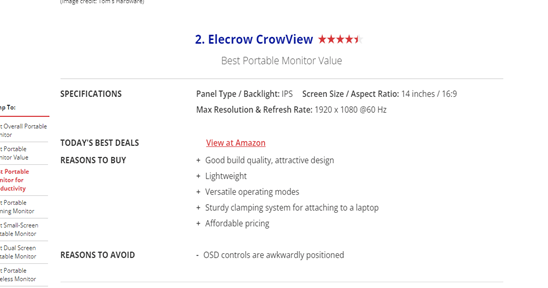
Image source: Tom’s Hardware
Personal finance
Promoting financial products offers a lucrative opportunity for affiliate marketers. However, you need to prove your authenticity and transparency to consumers to build trust in this field.
Example: Money Crashers

Image source: Money Crashers
Money Crashers posts educational finance content helping users ‘turn the tables on money.’ As part of this online business model, they use affiliate marketing to generate commissions. See how they provide links to ‘open an account’ with leading banks on their blog about the best rewards checking accounts.
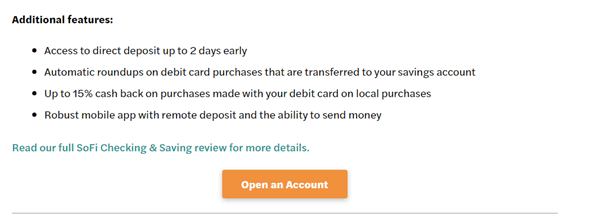
Image source: Money Crashers
Health and fitness
The sheer number of health and wellness products available for affiliate marketing makes this a lucrative niche. As with tech, this field is always growing and evolving as more people make fitness a priority.
Example: Roo’s Home

Image source: Instagram
Health, wellness, and beauty influencer ‘@homewithroo’ earns commissions through affiliates by providing her followers with recommendations for various products. For instance, in this Instagram post, she advertises the Laura Mercier Translucent Powder and Blush on Amazon.
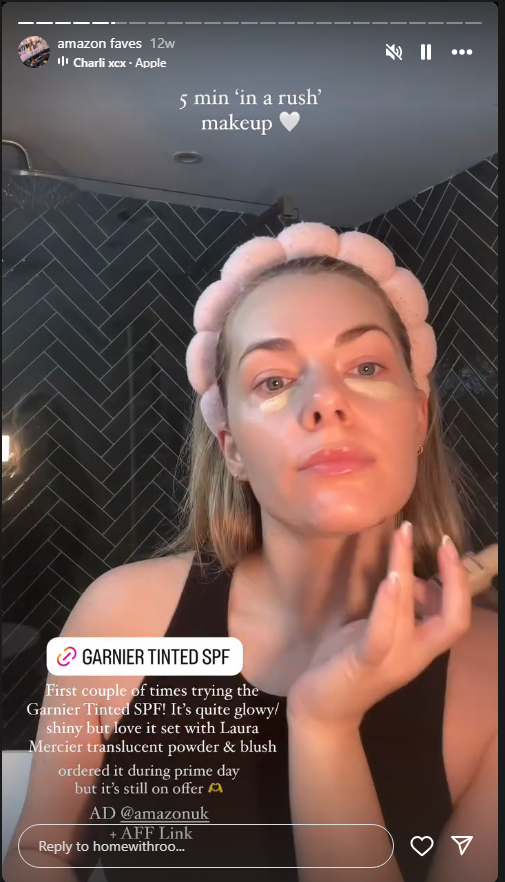
Image source: Instagram
You’ll notice the influencer speaks conversationally to her followers and offers actionable tips. All of this helps to build trust, leading to higher conversion rates.
Travel and adventure
This is a particularly good niche for involved affiliate marketing. Who doesn’t like the sound of travelling the world while testing out different products and earning commission?
Example: Travel Tom Tom

Image source: Travel Tom Tom
For instance, some affiliate websites, like Travel Tom, review local and electronic SIM card options worldwide to provide information to travellers. On reviews of different SIMs, he provides affiliate links to a partner site, known as SimOptions. When a consumer purchases their eSIM from that site, he makes a commission on the sale.
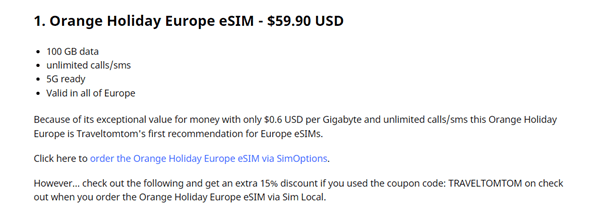
Image source: Travel Tom Tom
Affiliate marketing example.
Let’s explore some popular affiliate marketing channels through an example.
Kritika Khurana

Image source: Instagram
Indian influencer Kritika Khurana (@thatbohogirl) regularly uses affiliate marketing to promote her favourite products to her fanbase. In this example, she creates a reel of herself applying makeup.
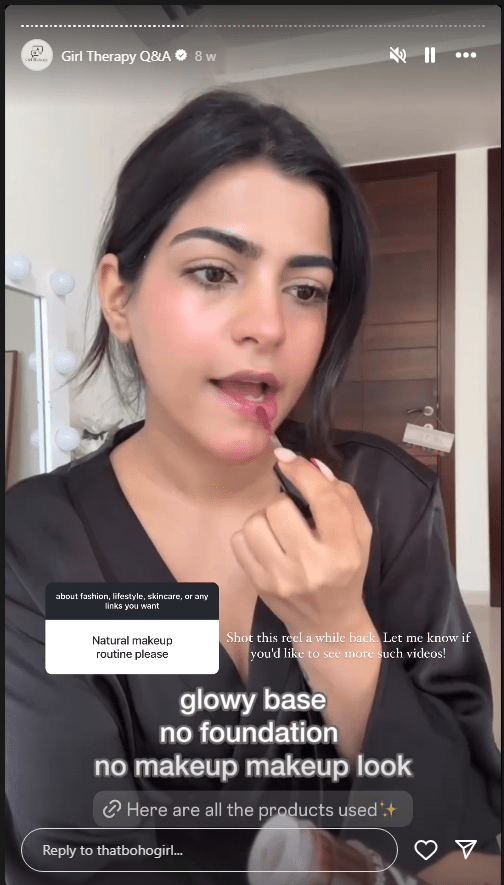
Image source: Instagram
Rather than linking to one specific product, she bundles her affiliate links together with a helpful button. This lets her audience pick and choose the products they’d like to buy and offers her more opportunities to generate commissions.
As you can see, you don’t need to limit yourself to specific products, but choosing a specific niche will always be beneficial, as your audience will learn to trust your knowledge.
Summing up
An affiliate campaign is one of the most effective ways to earn passive income online. With a commitment to your niche, an understanding of your audience, and a small amount of investment, you can earn consistent cash with little risk.
The first step to becoming an affiliate marketer is creating a marketing channel that customers want to engage with. Salesforce Marketing Cloud can help you segment your audience, learn what they need, and create tailored content that builds trust and drives web traffic to your chosen marketing channel.
Our CRM platform will keep your customer data in one place, making connecting with your audience easier and providing them with value at every touchpoint.
View the Marketing Cloud demo to learn how Salesforce can make your affiliate marketing journey a success. Or browse the full range of Salesforce products today.
FAQs
Browse our top affiliate marketing tips and frequently asked questions below.
Do I need a website or blog to do affiliate marketing?
Not at all. A website is an excellent affiliate marketing choice but only one of many options. You can use social media, email marketing, or a YouTube channel instead.
How do I choose a niche for affiliate marketing?
Choose a niche that is likely to be profitable but also one that interests you. Ultimately, you’ll need to have a passion for your specialty for your audience to buy in.
Can I join multiple affiliate programs?
Yes. You can join as many affiliate programs as you like. This can increase your earning potential. Just be sure they align with your audience and niche.
Are there any risks associated with affiliate marketing?
If you’re relying on affiliate marketing as your sole source of income, you may have good and bad months for revenue. In addition, there’s the possibility of noncompliance if you fail to disclose you’re an affiliate of a brand.
How do affiliate marketers get paid?
Many affiliate marketing platforms offer a pay-per-sale structure (a percentage of the final sale). Some might offer a pay-per-click (a flat fee for every click) or pay-per-lead (payment for every lead generated) structure instead.



